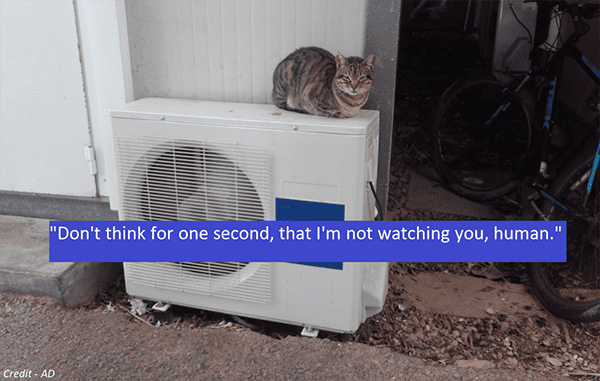‘Lost in Translation’ – 7 Reasons Why Your Vids Need Subtitles
OK, I know what you’re probably thinking! Who cares about subtitles? What’s all the big fuss about? Well, esteemed reader, subtitles and closed captions are a bigger deal than most content creators actually realise. Whether it’s all for better clarity of meaning for international clients, or due to the ominous weight of disability-conscious EU directive legal obligations – subtitles and closed captions can be more important than meets the eye!
So, with this in mind, down below are 7 top reasons why your vids really need subtitles. Let’s go:
1. Clarity is King (“Erm… what did he say?”)
Whether you are simply a private individual looking to work on a casual video project or a seasoned business professional looking to produce top tier video content for your clients, subtitles provide much needed clarity, where it counts. Another option is the more comprehensive closed caption subtitles, but we’ll get onto that topic in a bit.
Clarity is the name of the game. Clarity, that is, in the murky world of video content editing – strong speaker accents, loud, unpredictable noises and random, incoherent mumbling! Such is the bane of video content producers the world over!
Fear not, however, because adding subtitles or closed captions to your video content can literally mean the difference between your viewing audience thoroughly understanding your content and instead, simply mishearing or misunderstanding crucial parts of your message. Subtitling will also ensure that technical terminology or niche business minutiae is accurately detailed for effective communication to your viewing audience.
2. EU Accessibility Directive (“Sorry sonny, the law is the law.”)
In certain cases, if video content is required for the public sector (for example, in Finland) adherence to ‘accessibility’ requirements should be followed. Namely, in respect of the EU’s “Accessibility of websites and mobile applications” directive, video content should be created in line with particular (WCAG 2.1) guidelines. Do be aware, however, that rules may be different according to your particular global location.
Without boring you to sleep with the intricacies, the main gist of it, is that in addition to normal subtitles, such video content needs to also contain closed captions to show non-speech information, as well as identify who is speaking at any given point during a video. That is, unless the content of the video and/or audio is otherwise clear on the website. The end result being that the captioned video enables people who are deaf or hard of hearing to watch synchronized media presentations and enjoy a full viewing experience.
Producing and managing digital content in line with your organisation’s legal obligations can sometimes prove to be a tricky prospect. Did you know that not too long ago, Harvard and MIT faced lawsuits over closed caption subtitles? It pays to be aware of your organisation’s legal obligations.
[Teacher]: Have you done your homework for today, Jonathan?
[Loud, eerie groaning][Jonathan]: Me no comprende the English, señor.
3. Accommodate a Wide Spectrum of Viewers (“This vid is for everyone.”)
Whether, you decide to add full-on closed captions to your video content, or whether you decide to stick with regular subtitles, both options allow your content to be more accessible to a wider audience.
Many businesses and educational institutions add subtitles to their videos as it will mean that their video content can be better enjoyed by adults and children who are deaf or hard of hearing. In addition, the content can be fully enjoyed by people with autism, learning disabilities or attention deficit disorders.
According to charities, such as the National Deaf Children’s Society, deaf children in particular often suffer from ‘concentration fatigue’ and ‘this fatigue may have significant impact on their learning and development.’ Also, some studies have suggested that subtitles can help to reduce such fatigue in deaf viewers, in that subtitles help the deaf person to more easily follow and process video content, as well as help reduce cognitive overload. The National Deaf Children’s Society even went so far as to launch a subtitles campaign for deaf children.

4. SEO (“Ya do want more views don’t ya, buddy?”)
OK, so despite the cheesy title, it is true that if you decide to add closed caption subtitles to your public video content, it can improve your Site Engine Optimization on YouTube, as well as on your own website or blog. Furthermore, adding transcripts of your captions alongside your videos, can allow search engines to better locate keywords, index your video correctly and ultimately increase organic search results.
This obviously, is not a concern if the video is to be a private affair, however, should you wish to publish your video out to the wider world, Site Engine Optimization can improve the chances of your video being seen, and thus improve the spread of your content and message.
If your video is to be published on YouTube, for example, adding captions has been demonstrably proven to increase views. For example, according to the company ‘3Play Media,’ during a controlled study in 2013, Discovery Digital Networks (DDN) discovered an overall view count increase of 7.32% for captioned videos. Furthermore, during the first 14 days after adding captions, the gains in views were greatest with a 13.48% increase. Not bad, eh?
5. Expand International Outreach (“No I meant, digitally. Refund the ticket.”)
In terms of businesses, in this global day and age, and especially during these particularly challenging times, expanding your company’s outreach internationally can make all the difference to securing continued business growth.
Should businesses wish to make client-focused or marketing-focused videos to international clients, the addition of subtitles translated into the language of one’s target audience can help immensely with international expansion. Translated subtitles can ensure that a company can accurately and effectively get their message across, with no chance of anything being ‘lost in translation,’ so to speak.
In terms of international expansion also, having a video with subtitles translated into one language, can subsequently make it a lot easier to have the same video translated into another language, later on. In this way, a company can spread their video content swiftly and efficiently to other countries. “Väldigt coolt!”
6. “Silence is Golden” (Said literally all nursery teachers, everywhere.)
‘Silence is indeed Golden’ and nursery teachers certainly aren’t the only ones who could do with a bit of quiet relaxation time now and then!
Did you know, that according to the non-profit educational organisation, the American Press Institute, data from publishers shows that 85% of Facebook videos are watched without sound?
In addition, this is data just from Facebook, so no doubt other social media sites have somewhat similar statistical trends. When it comes to subtitles, therefore, if subtitles or closed captions are added to your public content videos, then your content will resultantly have a greater chance of being seen.
Think of all those potential viewers, stuck in libraries, public transport or places where sound is not convenient. People watching videos via subtitles, all because they don’t have earphones to hand. What an opportunity!
Furthermore, as mentioned before, people who are deaf or hard of hearing will also require subtitles to consume your content without sound. Closed captions for the win my friends.
7. Produce a More Professional End Product (“Now, that’s more like it.”)
A video with accurately transcribed, well-timed subtitles allows both individuals and companies to offer a more professional grade of media content as a final product. By providing well produced, accurately paced and accurately detailed, subtitled videos, content creators can offer the best viewing experience to their audience and truly put forward the best version of their content.
A video with subtitles or closed captions offers the potential for silent viewing (such as is common on social media sites) or in quiet areas. In addition, your video content production can be viewed and better understood by a wide, international audience. Not bag, Amigo.
*Just a quick reminder! Should you or your business require a bit of professional help, Spoken Oy offers high quality Subtitling services at very competitive rates. Currently, we offer subtitling services in a variety of different languages, and we offer the services for all sorts of video content, ranging from social media marketing videos, to personalised, client-focused video presentations. Thanks for reading!
